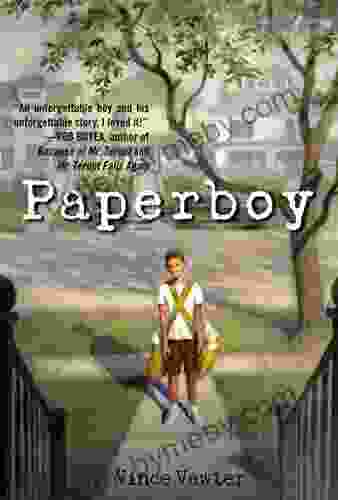Rivalry for Trade in Tea and Textiles: A Historical Perspective

The tea and textile trades have been major drivers of global commerce for centuries. The rivalry between different regions and nations for dominance in these trades has shaped the course of history, and continues to have a significant impact on the global economy and society.
This article provides a comprehensive analysis of the rivalry for trade in tea and textiles. It explores the economic, political, and social factors that have shaped this rivalry, and discusses its implications for the global economy and society.
The economic factors that have driven the rivalry for trade in tea and textiles include:
5 out of 5
| Language | : | English |
| File size | : | 4237 KB |
| Text-to-Speech | : | Enabled |
| Screen Reader | : | Supported |
| Enhanced typesetting | : | Enabled |
| Word Wise | : | Enabled |
| Print length | : | 243 pages |
- The high demand for tea and textiles: Tea and textiles are essential commodities that are in high demand all over the world. This demand has made the tea and textile trades lucrative businesses, and has attracted competition from different regions and nations.
- The limited supply of tea and textiles: Tea and textiles are both natural resources that are not easily produced. This limited supply has made it difficult for any one region or nation to dominate the market, and has led to competition for control of the supply chain.
- The high cost of production: Tea and textiles are both labor-intensive commodities to produce. This high cost of production has made it difficult for new entrants to the market, and has helped to maintain the dominance of established players.
The political factors that have shaped the rivalry for trade in tea and textiles include:
- Imperialism: The European powers used their political power to establish colonies in Asia and Africa, which gave them control over the production of tea and textiles. This control gave the European powers a significant advantage in the tea and textile trades, and allowed them to dominate the global market.
- Nationalism: The rise of nationalism in the 19th and 20th centuries led to a desire among many countries to control their own tea and textile industries. This desire led to the establishment of new tea and textile industries in countries such as India, China, and Brazil, and challenged the dominance of the European powers.
- Trade protectionism: Governments have often used trade protectionism to protect their domestic tea and textile industries from foreign competition. This protectionism has made it difficult for new entrants to the market, and has helped to maintain the dominance of established players.
The social factors that have shaped the rivalry for trade in tea and textiles include:
- Consumer preferences: Consumer preferences for different types of tea and textiles have played a major role in shaping the rivalry for trade in these commodities. For example, the British preference for black tea led to the development of the tea industry in India, while the Chinese preference for green tea led to the development of the tea industry in China.
- Cultural significance: Tea and textiles have cultural significance in many societies. For example, tea is an important part of Chinese culture, while textiles are an important part of Indian culture. This cultural significance has made it difficult for new entrants to the market, and has helped to maintain the dominance of established players.
- Labor conditions: The tea and textile industries have a long history of labor exploitation. This exploitation has led to social movements and protests, which have had a negative impact on the reputation of the tea and textile trades.
The rivalry for trade in tea and textiles has had a significant impact on the global economy and society. This impact includes:
- Economic growth: The tea and textile trades have been major drivers of economic growth in many countries. The production and sale of tea and textiles has created jobs, generated wealth, and improved living standards.
- Global trade: The tea and textile trades have played a major role in the development of global trade. The exchange of tea and textiles between different regions and nations has helped to spread culture, technology, and ideas.
- Consumer choice: The rivalry for trade in tea and textiles has led to a wide variety of tea and textiles available to consumers. This variety has allowed consumers to choose the products that best meet their needs and preferences.
The rivalry for trade in tea and textiles is a complex and fascinating phenomenon that has shaped the course of history. The economic, political, and social factors that have driven this rivalry have had a significant impact on the global economy and society. As the demand for tea and textiles continues to grow, the rivalry for trade in these commodities is likely to continue for many years to come.
5 out of 5
| Language | : | English |
| File size | : | 4237 KB |
| Text-to-Speech | : | Enabled |
| Screen Reader | : | Supported |
| Enhanced typesetting | : | Enabled |
| Word Wise | : | Enabled |
| Print length | : | 243 pages |
Do you want to contribute by writing guest posts on this blog?
Please contact us and send us a resume of previous articles that you have written.
 Book
Book Novel
Novel Page
Page Chapter
Chapter Text
Text Story
Story Genre
Genre Reader
Reader Library
Library Paperback
Paperback E-book
E-book Magazine
Magazine Newspaper
Newspaper Paragraph
Paragraph Sentence
Sentence Bookmark
Bookmark Shelf
Shelf Glossary
Glossary Bibliography
Bibliography Foreword
Foreword Preface
Preface Synopsis
Synopsis Annotation
Annotation Footnote
Footnote Manuscript
Manuscript Scroll
Scroll Codex
Codex Tome
Tome Bestseller
Bestseller Classics
Classics Library card
Library card Narrative
Narrative Biography
Biography Autobiography
Autobiography Memoir
Memoir Reference
Reference Encyclopedia
Encyclopedia Claire Maxted
Claire Maxted Victoria Tennant
Victoria Tennant Ching Yeung Russell
Ching Yeung Russell Christy Teglo
Christy Teglo Thomas Whittaker
Thomas Whittaker Shaina Rudolph
Shaina Rudolph Chris Meta
Chris Meta Chris Pallant
Chris Pallant Kinshasha Holman Conwill
Kinshasha Holman Conwill John D Couch
John D Couch Clarice Stasz
Clarice Stasz Chris Guillebeau
Chris Guillebeau Sam Tatam
Sam Tatam Cindy Margolis
Cindy Margolis David Bristow
David Bristow Chris Bernhardt
Chris Bernhardt Shelley Rigger
Shelley Rigger Christos A Djonis
Christos A Djonis S M Freedman
S M Freedman Max Borders
Max Borders
Light bulbAdvertise smarter! Our strategic ad space ensures maximum exposure. Reserve your spot today!

 David BaldacciPaperboy Vince Vawter: A Timeless Tale of Resilience and the Triumph of the...
David BaldacciPaperboy Vince Vawter: A Timeless Tale of Resilience and the Triumph of the... Christopher WoodsFollow ·13.7k
Christopher WoodsFollow ·13.7k Sidney CoxFollow ·17.9k
Sidney CoxFollow ·17.9k Earl WilliamsFollow ·5.3k
Earl WilliamsFollow ·5.3k Mario BenedettiFollow ·19.8k
Mario BenedettiFollow ·19.8k Miguel NelsonFollow ·12k
Miguel NelsonFollow ·12k Derek CookFollow ·10.1k
Derek CookFollow ·10.1k Nikolai GogolFollow ·6.5k
Nikolai GogolFollow ·6.5k Vic ParkerFollow ·12.8k
Vic ParkerFollow ·12.8k

 Rick Nelson
Rick NelsonThe Power of Positivity: 51 Motivational Quotes to...
In the tapestry of life, we encounter...

 Lee Simmons
Lee SimmonsThe Indian War of 1864: A Devastating Conflict in the...
The Indian War of 1864 was a brutal...

 Eddie Bell
Eddie BellQueen: The Unauthorized Biography: Unraveling the Secrets...
Prepare to delve into the captivating...

 Dion Reed
Dion ReedUnveiling the Imperfect Gems of Trauma and...
In the tapestry of...

 Desmond Foster
Desmond FosterThirty-Six Years in the Rockies: A Timeless Masterpiece...
A Journey Through Time and...
5 out of 5
| Language | : | English |
| File size | : | 4237 KB |
| Text-to-Speech | : | Enabled |
| Screen Reader | : | Supported |
| Enhanced typesetting | : | Enabled |
| Word Wise | : | Enabled |
| Print length | : | 243 pages |












